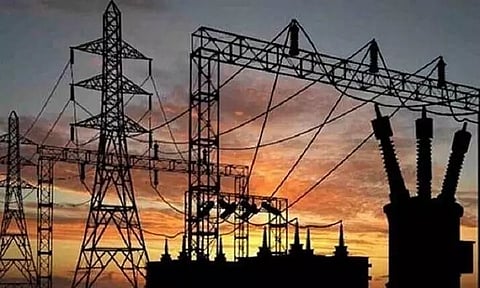Assam’s energy goals for growth
The growing demand for electricity is indicative of economic progress from expanding commercial and industrial activities and economic prosperity, boosting energy consumption in domestic households. Matching the demand with the generation of affordable electricity is a challenge with which Assam has been grappling for a long time. Climate change mitigation goals have brought additional challenges to generating more power from electricity from renewable sources. Aligning the state’s own energy generation programmes with the national climate goals is crucial for the long-term sustainability and commercial viability of the power projects. Official data shows that currently, electricity generated by Assam Power Generation Corporation Limited meets only 17% of the total electricity demand in the state. Overdependence on the national grid and other sources makes the state vulnerable to shortages and disruptions in power generation from the sources from which it purchases power to meet 83% of total electricity demand. The average demand for electricity in the state in 2023 was 1584 megawatts (MW), while the average peak hour demand was 2540 MW. Meeting peak hour demand pushes the state’s power procurement bill, but any shortfall in power availability compels the Assam Power Distribution Company Limited (APDCL) to resort to load shedding. Disruption in power supply sends a negative message to potential investors despite the availability of raw materials and improved infrastructure such as good roads and bridges from identified sites to markets. After the commissioning of ongoing power projects by APGCL, the generation company will be able to increase its installed capacity by an additional 814 MW, but not before 2027. With the energy sources of these projects being hydro and solar, the roadmap of APGCL energy goals is in alignment with the climate goal. The pace of execution needs to be accelerated to derive timely benefits for faster economic prosperity. Solar energy projects of APDCL for the generation of 1000 MW under the Chief Minister Solar Energy project and 320 MW under Build, Own, Operate mode, and the proposed generation of 2000 MW of solar energy by APDCL in joint ventures with two private companies hold high hopes for significantly augmenting electricity from renewable sources in the state. These projects meeting target dates are critical to matching pace with growing energy demand in the state. The availability of affordable electricity from clean energy sources is also essential to achieving the goals of decarbonising the transport sector in the state. Increasing charging stations across the state can boost the adoption of environmentally friendly electric cars and other vehicles. If the electricity required for these charging stations is met by power projects sourcing energy from coal or other fossil fuels, then the objective of electric vehicles for climate change mitigation goals will be lost and will only lead to more carbon emissions. Assam will be supplied with 25 MW of electricity free of charge by the National Hydroelectric Power Corporation from its Lower Subansiri hydroelectric project, while the APDCL has already entered into a power purchase agreement to purchase 208 MW of power when it gets commissioned. Apprehensions of downstream impact from this project located on the Assam-Arunachal Pradesh inter-state boundary delayed the project construction and execution point towards the complexities of mega hydroelectric power projects in the ecologically fragile northeast region. Smaller hydroelectric projects, battery energy storage systems (BESS), and rooftop solar projects can be more sustainable for the region and need policy and investment push by the States. The APDCL initiating the Rs. 2000 crore 250 MW BESS project in collaboration with the ONGC Tripura Power Company Limited is a step in the right direction to meet increasing peak hour electricity demand in the state as the system stores energy for supplying electricity to peak hour demand on the grid. Fast-track such projects to ensure that grid reliability during peak hours is not affected by demand-supply mismatches. The state government has proposed in the annual budget for 2024–25 that all new buildings (private and public) to be constructed in the state shall mandatorily install roof-top solar facilities, and it shall come up with new legislation to this effect during the current year. Installation of rooftops in domestic households can significantly increase clean energy generation in the state, but the government, APDCL, needs to identify the reasons behind its slow progress despite subsidies provided by the Central Government and address those to make it popular. Building awareness on the importance of the installation of rooftop solar systems for people’s participation in climate change mitigation needs to be intensified. However, more clarity is needed on net metering of power produced and supplied to the grid by individual households and its reflection in the monthly electricity bill, as it is a key determinant influencing the approach of people towards rooftop solar projects. Growth in the MSME sector in the state due to incentives and ease of doing business has helped generate huge employment. The availability of reliable green energy is critical to sustaining this much-needed growth momentum.

